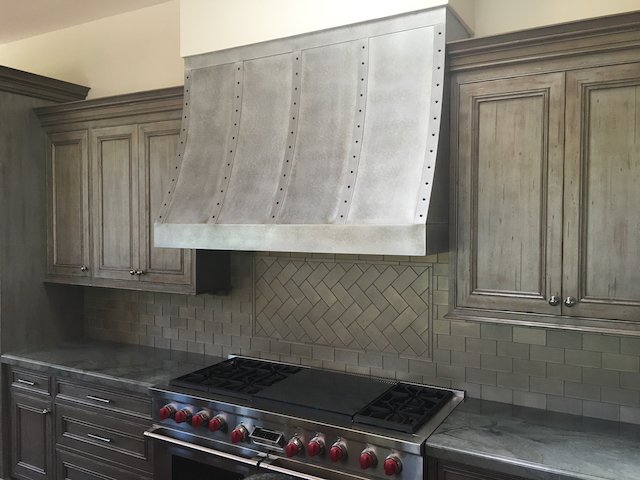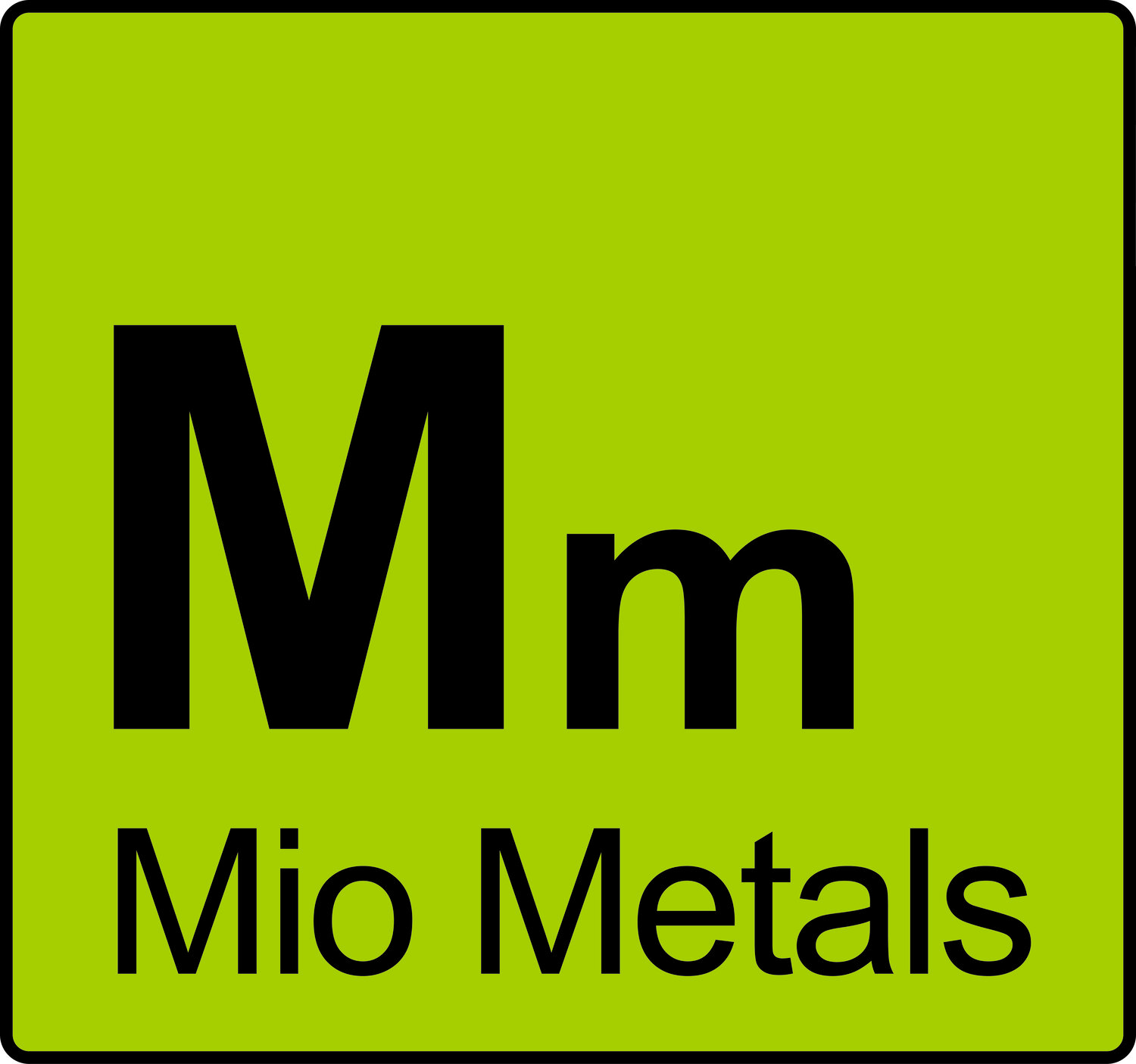
Range Hood Buying Guide
What width do I need?
What height do I need?
What if my ceiling is sloped?
What is a frame?
What is a finish?
What is a patina?
What width do I need?
Your copper range hood will be most effective if it covers the entire cooking area. That means not only the width of the heating elements, but also the depth from the back to the front edge of the front burner.
If you have a 36" range or cooktop ALONG A WALL, you could use a 36" wide range hood or move up to a 42" and have 3" overlap on each side. An obvious factor in the sizing is whether it is fitting between cabinets on a wall mount. If you are installing a hood over an island, we strongly recommend increasing the size 6" wider than the cooking area. With an unobstructed air flow, the hood needs a wider area to capture rising fumes and heat.
We make most of our copper hoods 24" deep (front to back) to cover most cooking surfaces. We can make them deeper if you have a special requirement.
What height do I need?
We generally position the hood 34" above the cooktop or 5'10" off the floor. This keeps it out of the cooking area, and still allows for a good draw from the fan. If you are worried about hitting your head on it, keep in mind that many ranges are deeper than 24" and people are generally standing a few inches away from the range. We can also make it a taller hood, so it hangs lower, which also positions the switches lower. We understand that not everyone is near the 5'10" height.
Likewise, if you ceiling is not exactly 8 feet or 9 feet, please round up and tell us your floor to ceiling height in the special comments of the order. We will build your hood to your specifications and can provide a drawing for your approval.
What if my ceiling is sloped?
We can handle that. We need to know the pitch (such as 5" rise and 12" run, etc) and the direction of the slope in relation to the hood (front sloping to back, etc). We will provide a drawing for your approval prior to finalizing the order.
What is a frame?
Most of our designs have a horizontal frame at the bottom of the hood. This adds structure to the hood as well as a design element/option. We can dress it up with straps and rivets, add lettering or switch it to stainless steel or brass to match other elements in your kitchen. Likewise, our texturing (at no additional charge) can be done to the frame only for a no-cost design contrast.
What is a finish?
Texturing is something we do instead of hammering. Hammering is when an actual hammer is used over and over to condition the copper. We run our copper through a texture roll - like a giant rolling pin with bumps - to achieve a textured look. This is a quieter method that saves our employees' ear drums and keeps them from any carpal tunnel problems. We are concerned about the health of our employees as well as the design of your hood. We have different rolls to produce a light, medium or heavy texture. The light texture is good for countertops, sinks or large body panels of range hoods. Heavy textures show up well on hoods with a patina and give the classic "Old World" look. We keep our medium texture handy for those who want something in between.
What is a patina?
A patina is the result of a chemical reaction with the metal (copper, zinc or brass) and various elements. We do not seal any of our products and they will, therefore, react with their environment. In most cases, polished copper will show evidence of this reaction by turning a brownish color. Green is usually seen in exterior applications and most reactants that a range hood come in contact with will not turn it green.
We do advance the patination process using mild chemicals in our shop. For design purposes, we offer a light brown or dark brown patina. The dark brown is the most popular to achieve the "Old World" look that attracts many people to copper. Our light brown is often used in kitchen with a lighter color scheme and helps take the reflectance off the copper while creating a base color similar to a tan leather.
Since we also work with Brass and Zinc, we do offer other patina options. Brass has a golden undertone to its browns in contrast to coppers reddish orange undertones. Zinc is normally a silver/gray color, but it has been quite popular to blacken it for more of a charcoal look.
While many fabricators have pictures of copper patinas online, we encourage you to request actual metal samples. This is a good practice from any copper hood manufacturer as patinas are not paint - they are a chemical reaction and the chemicals can vary in their mixture and result.
Design Tips
A hood plays the same role as a chimney and it is expected that, like a chimney, a hood is an integral part of the home and draws attention to its beauty. Therefore, a hood is perfectly able to stand alone on a wall above a range and arch up to the ceiling giving the appearance of continuing to the roof or a hood can be nestled between cabinets and under crown molding unifying the work and storage areas.
Our typical rule of thumb is that if a hood will have cabinets abutting it on each side, it is preferable to have one that is rectangular on the back rather than one that tapers from the sides to the center. This will create a continuity with the cabinets and help contain the space.
If there are 3 or more inches between the cabinets and the hood at the widest part, or there are no cabinets near the hood, a tapering hood always looks dramatic.
In either case, we, and most manufacturers, recommend installing a hood that is wider than the cooktop or range. For instance, if you will have a 36” range, a 42” hood is preferable to allow the hood to naturally capture the fumes. This is especially true if you are installing your cooking area in an island or peninsula.
We also recommend a 34” space between the cooking surface and the bottom of the hood. In some cases, we have deviated from this to accommodate different heights of homeowners or structural needs.
Because our hoods are made to order, we can customize them to fit into unique spaces. This includes pitched ceilings, exposed beams, and restricted duct locations. In the past, we have found solutions that involve exposed copper ducts or transitions, modifying design dimensions and substituting fan types. We are happy to discuss this with salespeople, homeowners and/or contractors.
Pricing
As you work with a local fabricator, educate yourself on what affects their pricing the most. As you eventually add options or trim budgets, you can understand where some of the biggest costs lie.
In general, the fan is a large portion of the expense and is the primary product requirement of the range hood so it does make sense to have a fan/filter insert that works well. Many manufacturers create pro-style hood inserts and can have a wide range of cost from one manufacturer to another, even if the CFM are comparable.
